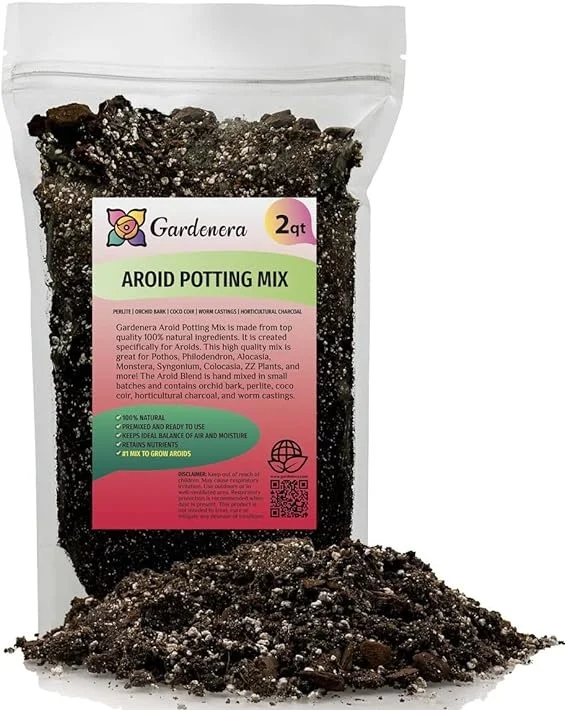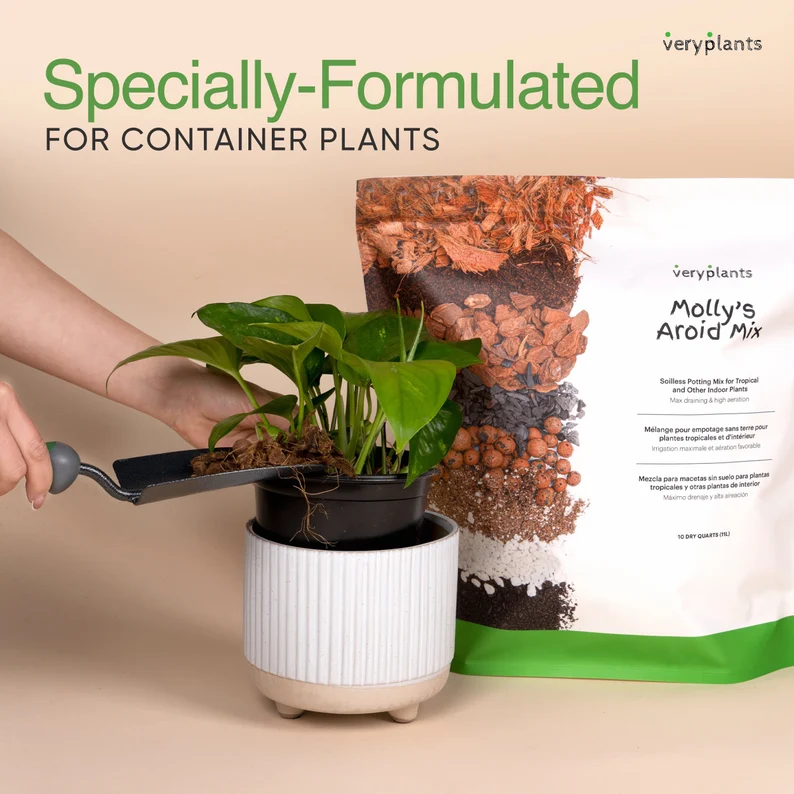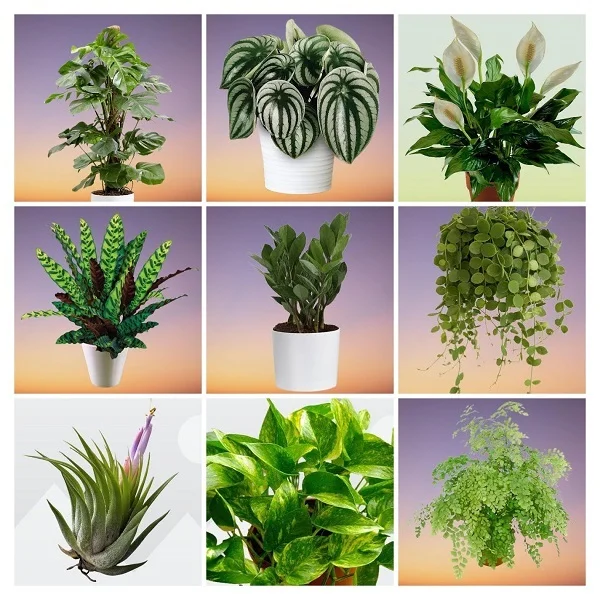Flamingo Flower (Anthurium scherzerianum) Indoor Care, Propagation, Problems and Solutions
Some links in this post may be affiliate links
Anthurium scherzerianum (Flamingo Flower) requires bright indirect light, warm and humid conditions and consistently moist, rich, well-drained, aroids soil coupled with fortnightly feeding in the growing season.
Anthurium scherzerianum also called Pigtail Plant is one of the popular Anthurium varieties with shiny, lance-shaped leaves and glossy red, heart-spaded blooms which can last for weeks.
Pigtail Plant is among the popular flowering plants which has gained the Royal Horticultural Society's Award of Garden Merit as an ornamental plant.
Anthurium scherzerianum may be mistaken for Anthurium andraeanum the difference between them is the spadix where A. andraeanum has a straight spadix while A. scherzerianum has a curly one.
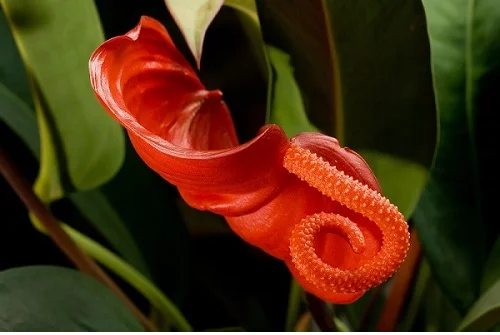
Botanical name: Anthurium scherzerianum
Family: Araceae
Common names: Flamingo Flower, Pigtail Plant
Origin
Anthurium scherzerianum is native to the tropical regions of Costa Rica where it grows as an epiphyte on trees.
Size
Flamingo flower grows to a height of 1 foot. The leaves are 8 inches long and are lance-shaped.
Flower
The blooms in Pigtail Plant are not true flowers but are spathes, each with a white spadix covered densely with tiny true flowers. It bears a 2 inches long waxy flower with an orange curly tail. Brilliant red is the usual color in Flamingo Flower but a white variety (album) is available. On account of its magnificent flowers, is among the best plants for the office where it will create a spectacular sight.
Toxicity
Flamingo Flower like other Anthuriums is toxic to both humans and pets. It contains oxalate crystals which can cause digestive distress, breathing problems and skin irritation. Always wear gloves when handling the plant and wash your hands thereafter.
Where to Buy
If you would like to add this colorful Flamingo Flower to your collection, they are available on Etsy (Link to Etsy).
Anthurium scherzerianum Care Indoors
Anthurium scherzerianum (Flamingo Flower) blooms in bright indirect light away from direct sunlight, average warmth of 15-270C, humidity of 60-70% and consistently moist, rich, well-drained, aroids soil coupled with fortnightly feeding during the growing season.
Flamingo Flower requires repotting only when it outgrows its current pot. Pruning is necessary to keep it neat and also minimize pest and disease infestations. Keep reading for more on these growing conditions and how to provide them.
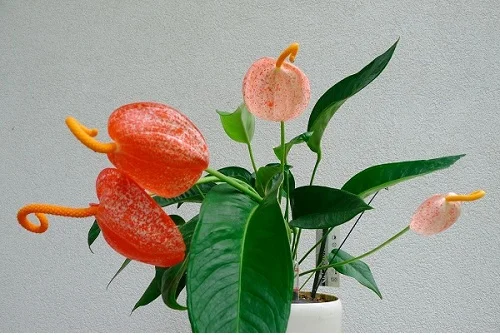
Watering
Water Anthurium scherzerianum liberally during the growing season when the top 1-2 inches of soil feels dry to the touch and keep soil consistently moist.
Decrease on watering in the cold season as growth is reduce to maintain the soil slightly moist but do not allow the soil to dry out completely.
Confirm that the pot has a drainage hole to prevent the soil from getting soggy as it can lead to root-rot and death of the plant.
Light Requirements
Flamingo Flower grows best in bright indirect light (dappled light). Keep it away from direct sunshine as it can scorch the leaves.
Anthurium scherzerianum can also be grown under a grow light where the natural lighting is inadequate. Check out these full spectrum grow lights on Amazon.
Rotate the pot regularly to ensure that the plant receives light on all sides for uniform growth.
Temperature and Humidity
Flamingo Flower requires an average warmth of 15-270C to thrive. Keep it away from cold drafts to prevent sudden changes in temperature which can affect the plant negatively.
Anthurium scherzerianum thrives in high humidity of 60-70%. To step up humidity, set the pot on a wet pebble tray or use a cool mist humidifier.
Regularly clean the leaves by damp-wiping with a soft cloth to get rid of dust. Do not leave water drops on the leaves as it may cause fungal infection.
Fertilizer
Feed Flamingo Flower every 2 weeks during the growing period with a phosphorous-rich, water-soluble fertilizer to promote flowering. Withhold feeding in the cold season as growth is minimal and feeding at this time can lead to fertilizer burn.
Flush out accumulated salts from the soil regularly by running a stream of water through the soil until the water comes out through the drainage hole. Allow it to run for a few minutes and repeat the process several times.
Potting Medium
The best potting soil for Anthurium scherzerianum should be rich in organic matter and free-draining to prevent it from getting soggy while providing the required nutrients. Most potting mixes designed for aroids are ideal for this plant.
Repotting
Repot Anthurium scherzerianum every 1-2 years at the beginning of the growing season. Use a pot one-size larger and free-draining soil that is rich in organic matter.
Ensure that the pot has a drainage hole to prevent the soil from getting soggy as it can lead to root-rot. Check out these pots with drainage holes on Amazon.
Pruning
Pruning Flamingo Flower is easy. Remove yellow and dead leaves to maintain the plant tidy as well as reduce pest infestation. Cut the leaves at the base of the stem with a sharp sterlized knife or pair of scissors to avoid unnecessary injuries which can lead to disease infestations.
Flamingo Flower Propagation
Anthurium scherzerianum (Flamingo Flower) can be propagated during the growing season from from splits by plant division.
How to propagate Flamingo Flower by plant divison
Water the Flamingo Flower thoroughly at least one day before to make it easier to divide and also hasten establishment. A well hydrated plant suffers less shock and takes a shorter time to take root.
Take the plant out of its pot and carefully divide it into sections by pulling apart the roots. Ensure each section has adequate roots to hasten establishment.
Select a 6 or 8 inches pot and ensure that the pot has a drainage hole to prevent the soil from getting soggy as it can lead to rotting.
Fill the pot with loose, free-draining potting mix and make a hole in the center of the pot. Ensure that the hole is slightly wider than the root base of the section.
Place the section in the previously made hole and lightly firm the soil around the base while taking care not to bury it too deep; maintain the section at the same soil level it was in the previous pot.
Water the soil thoroughly and place the set up in a well-lit, warm place until the new Pigtail Plant is well established after which you can begin routine care.
Related: How to Propagate Anthurium Plants by 5 Easy Methods
Flamingo Flower Care After Blooming
Once blooming is over, give Flamingo Flower a 6 weeks rest period in a cool, dimly-lit room at 150C. Give it very little water during this period.
Bring out the plant after the rest period and continue with normal care. This will break the dormancy cycle and signal the Flamingo Flower to start blooming.
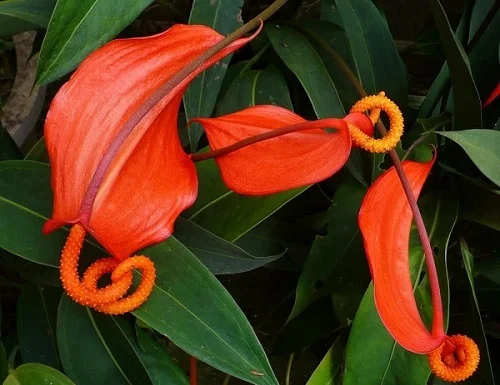
Anthurium scherzerianum Problems
Anthurium scherzerianum (Flamingo Flower) problems are lack of blooms, brown leaf tips, yellow leaves, brown leaf spots, drooping leaves, pests and diseases among others. Keep reading for more on these problems, their remedies and solutions.
Pests
The common pests in Anthurium scherzerianum are mealybugs, aphids and scales. Isolate the affected plant to prevent spread to other plants and treat it with neem oil or insecticidal Soap as per the manufacturer's instructions.
Diseases
Flamingo Flower is susceptible to root-rot disease which is prevalent in soggy soil brought about by poor soil drainage. Maintain the soil moist but not soggy by ensuring that the pot has a drainage hole and that the soil is free-draining. Learn how to treat root-rot in houseplants.
Drooping leaves and stems
There are four causes of drooping leaves and stems in Anthurium scherzerianum. The first cause of drooping leaves is low humidity. To increase humidity, set the pot on a wet pebble tray or use a cool mist humidifier.
The second cause of drooping leaves and stems in Flamingo Flower is incorrect watering, either underwatering or overwatering. Keep the soil moist at all times during the growing season and never allow the soil ball to dry out completely. Read more on how to water houseplants the correct way.
The third cause of drooping leaves and stems in Pigtail Plant is too high temperature due to exposure to direct sunlight. Shield the plant from direct sunlight by filtering the light with a sheer curtain.
The fourth cause of drooping leaves and stems in Flamingo Flower is pests and diseases infestation. Inspect the plant and take control measures for these pests.
No blooms
One reason why Anthurium scherzerianum is not blooming is too low light that is to say the plant is not getting enough light to encourage flowering. Move the plant to a brighter spot and ensure that it is receiving the bright indirect light or instal a grow light if the natural light is not adequate.
The second reason why Flamingo Flower is not blooming is underfeeding. Feed the plant every 2 weeks with a phosphorous-rich, water-soluble fertilizer during the growing season but do not feed during the cold season.
Brown leaf tips
There are two causes of brown leaf tips in Anthurium scherzerianum. One cause of brown leaf tips is that the air is too dry. Set the pot on a wet pebble tray or use a cool mist humidifier to increase humidity.
The second cause of brown leaf tips in Flamingo Flower is soggy soil. Keep the soil moist but not soggy by ensuring that the pot has a drainage hole and the soil is free-draining.
Yellow leaves
There are many causes of yellow leaves in Anthurium scherzerianum. One cause of yellow leaves is soggy soil. Maintain the soil moist but not soggy by ensuring that the pot has a drainage hole and the soil is free-draining.
The second cause of yellow leaves in Flamingo Flower is cold drafts (cold air). Protect the plant from cold drafts or place it away from windy doors and windows.
Brown leaf spots
The brown leaf spots are sunburn marks caused by exposure of the Anthurium scherzerianum to direct sunlight. Move the plant to a shaded place or use a curtain to filter the light.
Flowers turning green
If the Anthurium scherzerianum was in bloom when you bought it, the reason could be it was forced to bloom before it was ready to bloom so it loses color as it ages. Improper watering, excess nitrogen fertilizer and wrong temperatures can also cause greening of the flowers.
Lastly, the blooms last for about 4 weeks and as they age, they begin to lose color by becoming green and paler as aging continues. Some species of Anthuriums produce blooms that turn brilliant green in color; check the species you are growing.
You liked it? Share on social media.
Related Content
Amazon Associates Disclosure
Homeplantsguide.com is a participant in the Amazon Services LLC Associates Program, an affiliate advertising program designed to provide a means for sites to earn advertising fees by advertising and linking to amazon.com.
